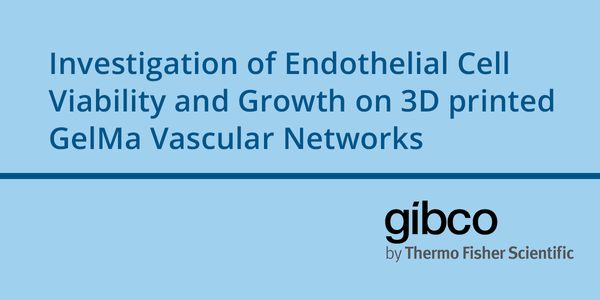Mouse surgery
Mouse surgery can be performed in the process of pre-clinical research. All surgeries would lead to an ultimate goal of benefiting patients. Any murine surgical procedures require approval by an Institutional Animal Care and Use Committee (IACUC) to ensure they are performed using humane and ethical methods.
-
OCT 24, 2023 | 8:00 AMTo bring your cutting-edge cell and gene therapies to the patients that need them as quickly as possible, you need access to the most knowledgeable scientists, innovative technologies, metho...SEP 10, 2020 | 12:00 AMSepsis is a life-threatening condition that is caused by the immune system’s inability to respond appropriately to an infection. How sepsis can change the gut microbiome in ways that a...JUN 18, 2020 | 9:00 AMDATE: June 18, 2020 TIME: 9:00am PDT, 12:00pm EDT Despite the success of immunotherapy against several malignancies including melanoma and lung adenocarcinoma, glioblastoma remains the excep...JUN 03, 2020 | 8:00 AMCancer initiation and virulence depends on mechanisms to evade host immunosurveillance and suppression of early invasion and growth. Distinct phenotypes of the immune infiltrates in and arou...Speaker: Alexander David Borowsky, MDJUN 03, 2020 | 12:00 AMProgrammed death-1 (PD-1) inhibits T and B cell function upon ligand binding. PD-1 blockade revolutionized cancer treatment, and while numerous patients respond, some develop autoimmune-like...OCT 31, 2019 | 9:00 AMDATE: October 31, 2019TIME: 9:00am PDT, 12:00pm EDT INTRODUCTION: A major limitation for the development of 3D engineered tissues is the absence of viable and perfusable...FEB 14, 2019 | 7:30 AMComparative oncology is the study of naturally-occurring cancers in pet animals (mainly dogs) to broaden and deepen our collective understanding of cancers in both companion species and human...Speaker: Amy LeBlanc, DVM DACVIMPresented at: Laboratory Animal Sciences Virtual Event Series 2019
OCT 10, 2018 | 10:30 AMThe microbiome signatures in the context of gynecologic cancers (endometrial and ovarian) and the potential for their clinical use will be discussed. The use of microfluidic technologies to i...Speaker: Marina Walther-Antonio, PhDOCT 10, 2018 | 9:00 AMHigh-throughput screening is widely useful in identifying genes and pathways that drive changes in cell behavior such as cell cycle regulation, metastasis, and drug resistance. Millipor...Speaker: Andrew Ravanelli, PhDOCT 10, 2018 | 6:00 AMUnderstanding the immune repertoire is an important aspect of immuno-oncology research, which can be used to gather insights into the function and overall status of the immune system. We have...Speaker: Samuel Rulli, PhDMAR 14, 2018 | 12:00 PMSome of the most significant hurdles faced by neuroscientists in the field of neurodegenerative disease research when seeking to acquire genetic information include sample accessibility, repr...Speaker: Kelly Miller, PhDMAR 14, 2018 | 12:00 PMClathrin mediated endocytosis (CME) at pre-synaptic terminals is functionally coupled to neuro-transmitter release. Like other cytosolic proteins, clathrin is synthesized in cell-bodies and c...MAR 14, 2018 | 10:30 AMCRISPR Cas9 nucleases have revolutionized gene editing enabling unprecedented efficiency of targeted mutagenesis. Even with such powerful technology at hand, sophisticated projects, su...Speaker: Jeremy LehmannMAR 14, 2018 | 10:30 AMSince its initial description more than 70 years ago, autism spectrum disorder (ASD) has been diagnosed more frequently in boys. However, we remain unsure of why males are affected in greater...MAR 14, 2018 | 6:00 AM98% of small molecules and 100% of large molecules do not cross the blood-brain barrier (BBB). Biologics, including therapeutic antibodies (e.g. anti-amyloid antibodies), have been at the for...JUL 01, 2017 | 8:00 AMBioflavonoids are dietary agents found in everyday food items such as fruits, vegetables, and legumes. It has been suggested that bioflavonoids be used with chemotherapeutics as an anti-cance...JUL 01, 2017 | 8:00 AMThe human inner ear contains ~75,000 sensory hair cells that detect sound or movement via mechanosensitive hair bundles and transmit signals to the brain via specialized sensory neurons. Inne...MAR 16, 2017 | 1:30 PMStudying the genetics of rare congenital disorders disrupting cognitive function has led to the identification of multiple disease genes that helped us better understand the mechanisms underl...MAR 16, 2016 | 12:00 PMThis talk will provide an overview of Fourier Transform InfraRed (FTIR) chemical imaging as a powerful and versatile method for obtaining information about CNS tissues. By combining imaging a...MAR 16, 2016 | 12:00 PMTraditional models of basal ganglia disorders are grounded in the assumption that network dysfunction is driven by alterations in intrinsic excitability of striatal neurons. Recent work has c...SEP 30, 2015 | 12:00 PMHepatocellular carcinoma (HCC) is a significant contributor to cancer-related mortality in the United States and worldwide. Current treatments are largely ineffective: single agent and combin...FEB 05, 2015 | 7:30 AMC.E. CREDITSAn anesthesia system designed to accommodate the physiological characteristics of small animals, including rats and mice, has the potential to provide great practical value to the life scienc...OCT 29, 2014 | 1:30 PMHuman malignant glioma is a uniformly fatal disease, causing over 14,000 deaths in the US this year. Adults diagnosed with malignant brain tumors have a median survival of approximately 15 mo...Speaker: Adrienne C. Scheck, PhDMAR 20, 2014 | 1:00 PMNeural stem cells exist in the adult mammalian brain throughout life. They reside in the subgranular layer of the dentate gyrus and in the subventricular zone. Neural stem cells have the capa...
OCT 24, 2023 | 8:00 AM
To bring your cutting-edge cell and gene therapies to the patients that need them as quickly as possible, you need access to the most knowledgeable scientists, innovative technologies, metho...
SEP 10, 2020 | 12:00 AM
Sepsis is a life-threatening condition that is caused by the immune system’s inability to respond appropriately to an infection. How sepsis can change the gut microbiome in ways that a...
JUN 18, 2020 | 9:00 AM
DATE: June 18, 2020 TIME: 9:00am PDT, 12:00pm EDT Despite the success of immunotherapy against several malignancies including melanoma and lung adenocarcinoma, glioblastoma remains the excep...
JUN 03, 2020 | 8:00 AM
Cancer initiation and virulence depends on mechanisms to evade host immunosurveillance and suppression of early invasion and growth. Distinct phenotypes of the immune infiltrates in and arou...
Speaker:
Alexander David Borowsky, MD
JUN 03, 2020 | 12:00 AM
Programmed death-1 (PD-1) inhibits T and B cell function upon ligand binding. PD-1 blockade revolutionized cancer treatment, and while numerous patients respond, some develop autoimmune-like...
OCT 31, 2019 | 9:00 AM
DATE: October 31, 2019TIME: 9:00am PDT, 12:00pm EDT INTRODUCTION: A major limitation for the development of 3D engineered tissues is the absence of viable and perfusable...
FEB 14, 2019 | 7:30 AM
Comparative oncology is the study of naturally-occurring cancers in pet animals (mainly dogs) to broaden and deepen our collective understanding of cancers in both companion species and human...
Speaker:
Amy LeBlanc, DVM DACVIM
Presented at: Laboratory Animal Sciences Virtual Event Series 2019
OCT 10, 2018 | 10:30 AM
The microbiome signatures in the context of gynecologic cancers (endometrial and ovarian) and the potential for their clinical use will be discussed. The use of microfluidic technologies to i...
Speaker:
Marina Walther-Antonio, PhD
OCT 10, 2018 | 9:00 AM
High-throughput screening is widely useful in identifying genes and pathways that drive changes in cell behavior such as cell cycle regulation, metastasis, and drug resistance. Millipor...
Speaker:
Andrew Ravanelli, PhD
OCT 10, 2018 | 6:00 AM
Understanding the immune repertoire is an important aspect of immuno-oncology research, which can be used to gather insights into the function and overall status of the immune system. We have...
Speaker:
Samuel Rulli, PhD
MAR 14, 2018 | 12:00 PM
Some of the most significant hurdles faced by neuroscientists in the field of neurodegenerative disease research when seeking to acquire genetic information include sample accessibility, repr...
Speaker:
Kelly Miller, PhD
MAR 14, 2018 | 12:00 PM
Clathrin mediated endocytosis (CME) at pre-synaptic terminals is functionally coupled to neuro-transmitter release. Like other cytosolic proteins, clathrin is synthesized in cell-bodies and c...
MAR 14, 2018 | 10:30 AM
CRISPR Cas9 nucleases have revolutionized gene editing enabling unprecedented efficiency of targeted mutagenesis. Even with such powerful technology at hand, sophisticated projects, su...
Speaker:
Jeremy Lehmann
MAR 14, 2018 | 10:30 AM
Since its initial description more than 70 years ago, autism spectrum disorder (ASD) has been diagnosed more frequently in boys. However, we remain unsure of why males are affected in greater...
MAR 14, 2018 | 6:00 AM
98% of small molecules and 100% of large molecules do not cross the blood-brain barrier (BBB). Biologics, including therapeutic antibodies (e.g. anti-amyloid antibodies), have been at the for...
JUL 01, 2017 | 8:00 AM
Bioflavonoids are dietary agents found in everyday food items such as fruits, vegetables, and legumes. It has been suggested that bioflavonoids be used with chemotherapeutics as an anti-cance...
JUL 01, 2017 | 8:00 AM
The human inner ear contains ~75,000 sensory hair cells that detect sound or movement via mechanosensitive hair bundles and transmit signals to the brain via specialized sensory neurons. Inne...
MAR 16, 2017 | 1:30 PM
Studying the genetics of rare congenital disorders disrupting cognitive function has led to the identification of multiple disease genes that helped us better understand the mechanisms underl...
MAR 16, 2016 | 12:00 PM
This talk will provide an overview of Fourier Transform InfraRed (FTIR) chemical imaging as a powerful and versatile method for obtaining information about CNS tissues. By combining imaging a...
MAR 16, 2016 | 12:00 PM
Traditional models of basal ganglia disorders are grounded in the assumption that network dysfunction is driven by alterations in intrinsic excitability of striatal neurons. Recent work has c...
SEP 30, 2015 | 12:00 PM
Hepatocellular carcinoma (HCC) is a significant contributor to cancer-related mortality in the United States and worldwide. Current treatments are largely ineffective: single agent and combin...
FEB 05, 2015 | 7:30 AM
C.E. CREDITS
An anesthesia system designed to accommodate the physiological characteristics of small animals, including rats and mice, has the potential to provide great practical value to the life scienc...
OCT 29, 2014 | 1:30 PM
Human malignant glioma is a uniformly fatal disease, causing over 14,000 deaths in the US this year. Adults diagnosed with malignant brain tumors have a median survival of approximately 15 mo...
Speaker:
Adrienne C. Scheck, PhD
MAR 20, 2014 | 1:00 PM
Neural stem cells exist in the adult mammalian brain throughout life. They reside in the subgranular layer of the dentate gyrus and in the subventricular zone. Neural stem cells have the capa...























